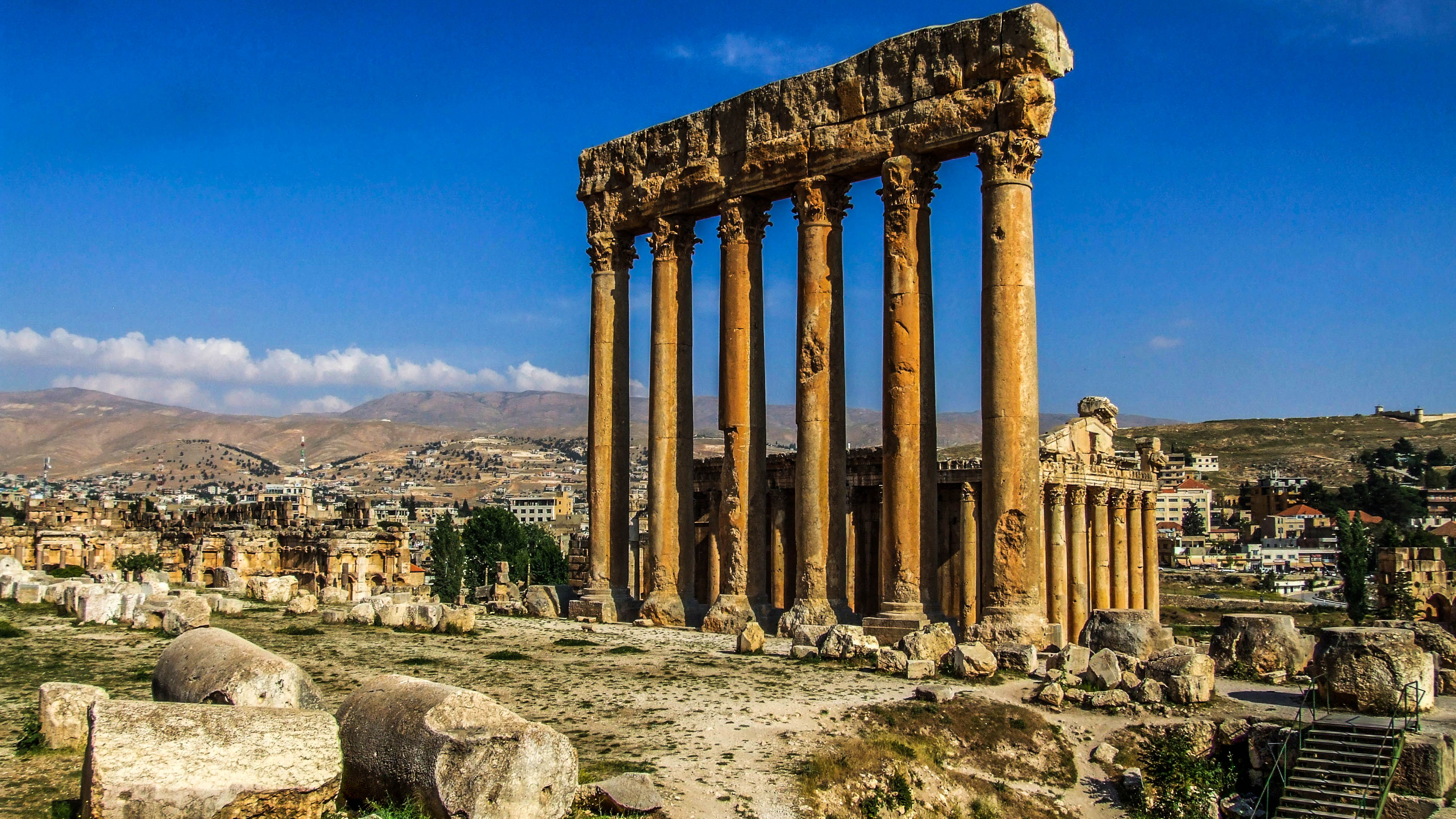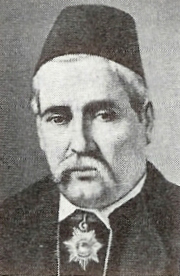|
Nabi Othman
Nabi Osman ( ar, النبي عثمان) is a village in the northern part of the Bekaa Valley, on the lower slopes of the Anti-Lebanon mountain range. It is located in Baalbek District and lies on the highway linking Lebanon and Syria. The town is home to a public school and The Malik Wehbe library. Families and Emigration Due to economic problems and the Lebanese war, a large number of the population has emigrated to Australia, Italy, the Gulf States, the United Kingdom and West Africa. Unlike most of the villages in Northern Bekaa, most of the residents are secularist and support the Syrian Social Nationalist Party. The village is home to several famous personalities: * The most famous family leader in the region Ali Mohammad Nazha known as Abo Wajeb, he is the current elected Mayor of the Nabi Osman. He is known for his peace keeping, generosity, wisdom, charity works, serving and always helping the people of his village and surrounding areas. *Ali M. Nazha, an agriculture ... [...More Info...] [...Related Items...] OR: [Wikipedia] [Google] [Baidu] |
Bekaa Valley
The Beqaa Valley ( ar, links=no, وادي البقاع, ', Lebanese ), also transliterated as Bekaa, Biqâ, and Becaa and known in classical antiquity as Coele-Syria, is a fertile valley in eastern Lebanon. It is Lebanon's most important farming region. Industry also flourishes in Beqaa, especially that related to agriculture. The Beqaa is located about east of Beirut. The valley is situated between Mount Lebanon to the west and the Anti-Lebanon Mountains to the east. It forms the northeasternmost extension of the Great Rift Valley, which stretches from Syria to the Red Sea. Beqaa Valley is long and wide on average. It has a Mediterranean climate of wet, often snowy winters and dry, warm summers. The region receives limited rainfall, particularly in the north, because Mount Lebanon creates a rain shadow that blocks precipitation coming from the sea. The northern section has an average annual rainfall of , compared to in the central valley. Nevertheless, two ... [...More Info...] [...Related Items...] OR: [Wikipedia] [Google] [Baidu] |
Anti-Lebanon
The Anti-Lebanon Mountains ( ar, جبال لبنان الشرقية, Jibāl Lubnān ash-Sharqiyyah, Eastern Mountains of Lebanon; Lebanese Arabic: , , "Eastern Mountains") are a southwest–northeast-trending mountain range that forms most of the border between Syria and Lebanon. The border is largely defined along the crest of the range. Most of the range lies in Syria. Etymology Its Western name ''Anti-Lebanon'' comes from the Greek and Latin , derived from its position opposite (') and parallel to the Mount Lebanon range (). Geology The Anti-Lebanon range is approximately in length. To the south, the range adjoins the lower-lying Golan Heights plateau, but includes the highest peaks, namely Mount Hermon (''Jabal el-Shaykh'', in Arabic), at 2,814 metres, and Ta'la't Musa, at 2,669 metres. These peaks, on the Lebanese-Syrian border, are snow-covered for much of the year. Anti-Lebanon mountains are an anticline. Their predominant rocks are limestone and chalk from ... [...More Info...] [...Related Items...] OR: [Wikipedia] [Google] [Baidu] |
Baalbek District
Baalbek District ( ar, قضاء بعلبك) is an administrative district in the Baalbek-Hermel Governorate of the Republic of Lebanon, having the city Baalbek as its capital. It is by far the largest district in the country comprising a total of . Major towns of the district are Hallanieh, Temnin el Fawka, Chmestar, Duris, Jdeide, Kasarnaba and Bodai Bodai ( ar, بوداي) is a Lebanese town in Baalbek District, Baalbek-Hermel Governorate, situated west of the Litani River in the foothills of Mount Lebanon. Bodai is located 15 km (9 miles) northwest of the ancient city of Baalbek and ... Districts of Lebanon {{lebanon-geo-stub ... [...More Info...] [...Related Items...] OR: [Wikipedia] [Google] [Baidu] |
Lebanon
Lebanon ( , ar, لُبْنَان, translit=lubnān, ), officially the Republic of Lebanon () or the Lebanese Republic, is a country in Western Asia. It is located between Syria to Lebanon–Syria border, the north and east and Israel to Blue Line (Lebanon), the south, while Cyprus lies to its west across the Mediterranean Sea; its location at the crossroads of the Mediterranean Basin and the Arabs, Arabian hinterland has contributed to History of Lebanon, its rich history and shaped Culture of Lebanon, a cultural identity of demographics of Lebanon#Religious groups, religious diversity. It is part of the Levant region of the Middle East. Lebanon is home to roughly six million people and covers an area of , making it the List of countries and dependencies by area, second smallest country in continental Asia. The official language of the state is Arabic, while French language, French is also formally recognized; the Lebanese Arabic, Lebanese dialect of Arabic is used alongside Mo ... [...More Info...] [...Related Items...] OR: [Wikipedia] [Google] [Baidu] |
Syria
Syria ( ar, سُورِيَا or سُورِيَة, translit=Sūriyā), officially the Syrian Arab Republic ( ar, الجمهورية العربية السورية, al-Jumhūrīyah al-ʻArabīyah as-Sūrīyah), is a Western Asian country located in the Eastern Mediterranean and the Levant. It is a unitary state, unitary republic that consists of Governorates of Syria, 14 governorates (subdivisions), and is bordered by the Mediterranean Sea to the west, Turkey to the north, Iraq to Iraq–Syria border, the east and southeast, Jordan to Jordan–Syria border, the south, and Israel and Lebanon to Lebanon–Syria border, the southwest. Cyprus lies to the west across the Mediterranean Sea. A country of fertile plains, high mountains, and deserts, Syria is home to demographics of Syria, diverse ethnic and religious groups, including the majority Syrians, Syrian Arabs, Kurds in Syria, Kurds, Syrian Turkmen, Turkmens, Assyrians in Syria, Assyrians, Armenians in Syria, Armenians, Circa ... [...More Info...] [...Related Items...] OR: [Wikipedia] [Google] [Baidu] |
Syrian Social Nationalist Party
The Syrian Social Nationalist Party (SSNP) or is a Syrian nationalist party operating in Syria, Lebanon, Jordan, and Palestine. It advocates the establishment of a Greater Syrian nation state spanning the Fertile Crescent, including present-day Syria, Lebanon, Iraq, Kuwait, Jordan, Palestine, Cyprus, Sinai, Hatay Province, and Cilicia, based on geographical boundaries and the common history people within the boundaries share. It has also been active in the Syrian and Lebanese diaspora, for example in South America with over 100,000 members as of 2016, it is the second-largest legal political group in Syria after the ruling Arab Socialist Ba'ath Party. Founded in Beirut in 1932 by the Greek Orthodox Lebanese intellectual Antoun Saadeh as an anticolonial and national liberation organization hostile to French colonialism, the party played a significant role in Lebanese politics and was involved in attempted coups d'état in 1949 and 1961, following which it was thoroughly ... [...More Info...] [...Related Items...] OR: [Wikipedia] [Google] [Baidu] |
Green Revolution
The Green Revolution, also known as the Third Agricultural Revolution, was a period of technology transfer initiatives that saw greatly increased crop yields and agricultural production. These changes in agriculture began in developed countries after World War II and spread globally till the late 1980s. In the late 1960s, farmers began incorporating new technologies such as high-yielding varieties of cereals, particularly dwarf wheat and rice, and the widespread use of chemical fertilizers, pesticides, and controlled irrigation. Agriculture also saw the adoption of newer methods of cultivation, including mechanization. These changes were often implemented as a package of practices meant to replace traditional agricultural technology. Both the Ford Foundation and the Rockefeller Foundation were heavily involved in its initial development in Mexico. One key leader was agricultural scientist Norman Borlaug, the "Father of the Green Revolution", who received the Nobel Peace P ... [...More Info...] [...Related Items...] OR: [Wikipedia] [Google] [Baidu] |
Beirut
Beirut, french: Beyrouth is the capital and largest city of Lebanon. , Greater Beirut has a population of 2.5 million, which makes it the third-largest city in the Levant region. The city is situated on a peninsula at the midpoint of Lebanon's Mediterranean coast. Beirut has been inhabited for more than 5,000 years, and was one of Phoenicia's most prominent city states, making it one of the oldest cities in the world (see Berytus). The first historical mention of Beirut is found in the Amarna letters from the New Kingdom of Egypt, which date to the 14th century BC. Beirut is Lebanon's seat of government and plays a central role in the Lebanese economy, with many banks and corporations based in the city. Beirut is an important seaport for the country and region, and rated a Beta + World City by the Globalization and World Cities Research Network. Beirut was severely damaged by the Lebanese Civil War, the 2006 Lebanon War, and the 2020 massive explosion in th ... [...More Info...] [...Related Items...] OR: [Wikipedia] [Google] [Baidu] |
Orontes River
The Orontes (; from Ancient Greek , ) or Asi ( ar, العاصي, , ; tr, Asi) is a river with a length of in Western Asia that begins in Lebanon, flowing northwards through Syria before entering the Mediterranean Sea near Samandağ in Turkey. As the chief river of the northern Levant, the Orontes was the site of several major battles. Among the most important cities on the river are Homs, Hama, Jisr al-Shughur, and Antakya (the ancient Antioch, which was also known as "Antioch on the Orontes"). Names In the 9th century BCE, the ancient Assyrians referred to the river as Arantu, and the nearby Egyptians called it Araunti. The etymology of the name is unknown, yet some sources indicate that it might be derived from ''Arnt'' which means "lioness" in Syriac languages; others called it ''Alimas'', a "water goddess" in Aramaic. However, ''Arantu'' gradually became "Orontes" in Greek. In the Greek epic poem '' Dionysiaca'' (circa 400 CE), the river is said to have been named after Or ... [...More Info...] [...Related Items...] OR: [Wikipedia] [Google] [Baidu] |





